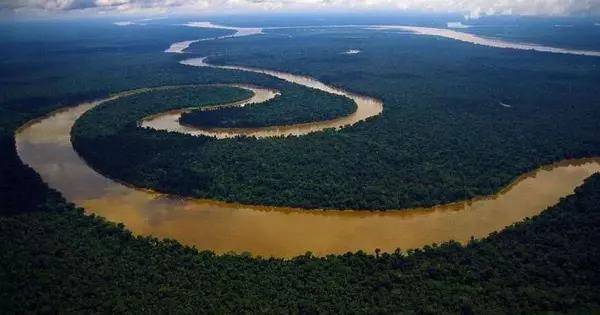Deforestation, drought, fires, and climate change have ravaged the Amazon for decades, raising fears among scientists that the vast South American rainforest will eventually reach a critical tipping point and irreversibly transition into a drier, savanna-like ecosystem.
New research suggests that a lack of phosphorus in the soil may be limiting the growth of the Amazon rainforest in our increasingly carbon-rich atmosphere. Plants grow faster in response to higher CO2 concentrations, implying that they store more carbon. This storage, particularly in vast forests like the Amazon, helps to limit rising CO2 levels, thereby slowing climate change.
Plants, on the other hand, require nutrients to grow, and a new study suggests that the availability of a specific nutrient, phosphorus, may limit Amazon’s ability to increase productivity (growth rate) as CO2 levels rise. The researchers warn that this could make the rainforest less resilient to climate change.
An international team led by Brazil’s National Institute of Amazonian Research (INPA) and the University of Exeter conducted the study, which was published in the journal Nature.
Our findings call into question the ability of Amazonia’s current high rates of carbon uptake to be sustained. Approximately 60% of the Amazon basin is on old soils with low phosphorus content, but the role of phosphorus in controlling productivity was unknown because most fertilization experiments in other parts of the world were in more phosphorus-rich systems.
Hellen Fernanda Viana Cunha
“Our findings call into question the ability of Amazonia’s current high rates of carbon uptake to be sustained,” said INPA lead author Hellen Fernanda Viana Cunha. Approximately 60% of the Amazon basin is on old soils with low phosphorus content, but the role of phosphorus in controlling productivity was unknown because most fertilization experiments in other parts of the world were in more phosphorus-rich systems.”
“Our experiment, the Amazon Fertilisation Experiment (AFEX), examined the effects of adding phosphorus, nitrogen, and base cations (other potentially key nutrients) in an old-growth, low-phosphorus area of the rainforest. Only phosphorus led to increased productivity in the first two years of the experiment. Having such rapid and strong responses to phosphorus, both above and below ground, is an indication that the whole system was functioning under severe phosphorus limitation.”
Soil in tropical areas like the Amazon formed millions of years ago, and some nutrients can be lost over time. While microorganisms associated with certain plants and soils can absorb nitrogen from the air, phosphorus is not available as a gas in the atmosphere, so once depleted, there is little opportunity for levels to increase.

Two years of extra phosphorus caused significant increases in fine root growth (29%) and canopy productivity (19%) in the new experiment. Stem growth remained unchanged. Cunha speculated that this could be due to the fact that roots and leaves require more phosphorus than stems, and stem growth is a slower process.
The researchers calculated how much the amount of biomass varied from month to month across the Amazon basin during the 25-year study window to estimate the forest’s resilience. This necessitated the analysis of satellite data detailing an area’s “vertical optical depth,” a measure of tree biomass that is closely related to water content. A rise in variation for this metric would indicate a decrease in forest resilience.
Long-term experiment monitoring is required to determine whether a stem wood productivity response emerges. The findings have significant implications not only for carbon storage, but also for the resilience of forests to climate change.
“To cope with and recover from increased threats such as droughts, we need the forest to be growing better than it used to,” said Professor Iain Hartley, of the University of Exeter’s Geography department.
“CO2 fertilization may increase forest resilience, but our findings suggest that phosphorus availability will limit that effect – and thus the risks posed by climate change become more significant. In short, parts of the rainforest growing in low-fertility soils may be more vulnerable than is currently recognized.”
Testing this suggestion is an urgent research priority. The AmazonFACE experiment, whose international team includes INPA and Exeter researchers, is addressing this critical priority. The Natural Environment Research Council supported the new study.
















